There are several water spirits with scary and awesome powers. I decided that I liked the Glaistig the most and that I will merge some of the characteristics of other water spirits with it for my own version of it for my Origin of the Fae.
Folklore
British Goblins Welsh Folk-lore, Fairy Mythology, Legends and Traditions by Wirt Sikes [1880]
THE Gwragedd Annwn (literally, wives of the lower world, or hell) are the elfin dames who dwell under the water. I find no resemblance in the Welsh fairy to our familiar mermaid, beyond the watery abode, and the sometimes winning ways. The Gwragedd Annwn are not fishy of aspect, nor do they dwell in the sea. Their haunt is the lakes and rivers, but especially the wild and lonely lakes upon the mountain heights. These romantic sheets are surrounded with numberless superstitions, which will be further treated of. In the realm of faerie they serve as avenues of communication between this world and the lower one of annwn, the shadowy domain presided over by Gwyn ap Nudd, king of the fairies.
The Science of Fairy Tales An Enquiry Into Fairy Mythology by Edwin Sidney Hartland [1891]
The earliest writer who mentions a story of this type is Gervase of Tilbury, marshal of the kingdom of Arles, who wrote about the beginning of the thirteenth century. He professes to have himself met with a woman of Aries who was one day washing clothes on the banks of the Rhone, when a wooden bowl floated by her. In trying to catch it, she got out of her depth and was seized by a Drac. The Dracs were beings who haunted the waters of rivers and dwelt in the deep pools, appearing often on the banks and in the towns in human form. The woman in question was carried down beneath the stream, and, like Cherry of Zennor, made nurse to her captor’s son. One day the Drac gave her an eel pasty to eat. Her fingers became greasy with the fat; and she happened to put them to one of her eyes. Forthwith she acquired a clear and distinct vision under the water. After some years she was allowed to return to her husband and family; and going early one morning to the market-place of Beaucaire, she met the Drac. Recognizing him at once, she saluted him and asked after the health of his wife and child. “With which eye do you see me?” inquired the Drac. The woman pointed to the eye she had touched with the eel-fat; and thrusting his finger into it, the Drac vanished from sight.
Scottish Fairy and Folk Tales, by George Douglas, [1901]
THE Dracæ are a sort of water-spirits who inveigle women and children into the recesses which they inhabit, beneath lakes and rivers, by floating past them, on the surface of the water, in the shape of gold rings or cups. The women thus seized are employed as nurses, and after seven years are permitted to revisit earth. Gervase of Tilbury mentions one woman in particular who had been allured by observing a wooden dish, or cup, float by her, while she was washing clothes in the river. Being seized as soon as she reached the depths, she was conducted into one of the subterranean recesses, which she described as very magnificent, and employed as nurse to one of the brood of the hag who had allured her. During her residence in this capacity, having accidentally touched one of her eyes with an ointment of serpent’s grease, she perceived, at her return to the world, that she had acquired the faculty of seeing the Dracæ, when they intermingle themselves with men. Of this power she was, however, deprived by the touch of her ghostly mistress, whom she had one day incautiously addressed.
The Fairy Mythology by Thomas Keightley [1870]
They also commonly assert, that the Dracs assume the human form, and come early into the public market-place without any one being thereby disturbed. These, they say, have their abode in the caverns of rivers, and occasionally, floating along the stream in the form of gold rings or cups, entice women or boys who are bathing on the banks of the river; for, while they endeavour to grasp what they see, they are suddenly seized and dragged down to the bottom: and this, they say, happens to none more than to suckling women, who are taken by the Dracs to rear their unlucky offspring; and sometimes, after they have spent seven years there, they return to our hemisphere.
There is also on the banks of the Rhone, under a house, at the North-gate of the city of Arles, a great pool of the river . . . . In these deep places, they say that the Dracs are often seen of bright nights, in the shape of men. A few years ago there was, for three successive days, openly heard the following words in the place outside the gate of the city, which I have mentioned, while the figure as it were of a man ran along the bank: ‘The hour is passed, and the man does not come.’ On the third day, about the ninth hour, while that figure of a man raised his voice higher than usual, a young man ran simply to the bank, plunged in, and was swallowed up; and the voice was heard no more.
The Book of Hallowe’en by Ruth Edna Kelley [1919]
A curious custom that prevailed in the island of Lewis in the eighteenth century was the worhip of Shony, a sea-god with a Norse name. His ceremonies were similar to those paid to Saman in Ireland, but more picturesque. Ale was brewed at church from malt brought collectively by the people. One took a cupful in his hand, and waded out into the sea up to his waist, saying as he poured it out: “Shony, I give you this cup of ale, hoping that you’ll be so kind as to send us plenty of sea-ware, for enriching our ground the ensuing year.” The party returned to the church, waited for a given signal when a candle burning on the altar was blown out. Then they went out into the fields, and drank ale with dance and song.
Carmina Gadelica, Volume 2, by Alexander Carmicheal, [1900]
Glaistic, glaistig, glaisnig, glaislig, a water-imp, from ‘glas,’ water, ‘stic,’ imp. The ‘glaistic’ is a vicious creature, half woman, half goat, frequenting lonely lakes and rivers. She is much dreaded, and many stories are told of her evil deeds. ‘MacUalrig Mor,’ Big Kennedy of Lianachan, Lochaber, was coming home at night when he saw the ‘glaistic.’ He seized her and put her on the saddle before him with his sword-belt round her waist, and when he got home he locked her in the ‘cul-taigh,’ back-house. In the morning Big Kennedy heated the coulter of his plough and requested the ‘glaistic’ to swear on the iron that she would never again molest man or woman in the place, and never more be seen in Lochaber while the sun shone by day or the moon by night. When the ‘glaistic’ stretched out her lovely little hand and placed it on the coulter to give the required assurance, her hand was burnt to the bone. With a shriek of agony she flew out at the window and through the mist of the morning to the hillside beyond, and there she put out three bursts of the blood of her heart, which are still visible in the discoloured russet vegetation of the spot, and with each burst of blood the ‘glaistig’ uttered a curse on Big Kennedy and on his seed for ever:–
| ‘Fas mar an roinneach daibh, Crion mar an luachair daibh, ’S diombuan mar cheo nam beann.’ | Growth like the fern to them, Wasting like the rushes to them, And unlasting as the mist of the hill. |
The descendants of Big Kennedy of Lianachan say that the curse is still upon them.
Element Encyclopedia of Fairies by Lucy Cooper
Alven
Also known as Otteermaaner, Alven are water sprites who dwell in the river Elbe. Light and wingless, they wrap themselves in bubbles in the water to move around. As the name Otteermaaner suggests, they are sometimes said to show themselves as otters. They are believed to be the protectors of night-blooming water flowers.
Belliegha
A Maltese water monster inhabiting, and controlling, wells and water sources; belliegha translates to “whirpool”.
Bisimbi
Nature spirits associated with waterfalls, pools, and also rocky outcrops, who are described in traditional Central African folk legends. They take on diverse names and attributes in other areas of the continent. Generally benevolent to humans, they can be troublesome if generous offerings are not forthcoming and downright malevolent in their attempts to penetrate the brains of children. Mothers have devised a simple foil to this endeavour by placing a wooden sliver across the fontanelle on their babies’ heads.
Boginki
Supernatural female water spirits in Polish mythology, “little goddesses” who sometimes steal human babies, replacing them with changelings.
Ezerinis
A Lithuanian water spirit taking its name from ezeras, meaning “lake”.
The Fideal
A water demon inhabiting the Loch Fideil in Scotland, ensnaring mortals and drowning them.
Fossegrim
In Norwegian tradition the fossegrim is a mostly benign water spirit of outstanding musical ability who will teach others to play in exchange for a good meal. However, if the offering is less than sumptuous, the fossegrim will only show them how to tune the instrument.
The Fuathan
A name encompassing all Scottish water spirits inhabiting sea and freshwater lochs and rivers. Most are spiteful and threatening in nature.
Glaistig
(also Green Glaistig, Green Lady)
An enigmatic water spirit from Scotland, described variously as malign, helpful, sorrowful, dangerous to children, seductive, and sometimes appearing in the form of half-woman, half-goat. She is described in Superstitions of the Highlands and Islands of Scotland (1900) by JG Campbell:
The true Glaistig is a woman of human race, who has been put under enchantments, and to whom a Fairy nature has been given. She wears a green dress, like Fairy women, but her face is wan and grey, whence her name Glaistig, from glass, grey.
Shony
Sea spirit of the Isle of Lewis. Traditionally, the people of Lewis made offering to Shony every Halloween to ensure that they had enough seaweed to fertilise the land. They brewed a special batch of ale using a peck of malt from each family. Then one person was chosen who waded out into the sea carrying a cup of ale to ask Shony to send them plenty of seaweed to enrich the ground for a good harvest the following year. After tipping the ale into the sea, he returned to shore and the villagers lit a candle in the church before going into the fields to drink the rest of the ale and spend the night drinking and dancing.
Sjora
Scandinavian water and sea spirit, a harbinger of impending storms. Usually described as female and often manifesting as a hand rising above the water in warning.
Dracs
In the folklore of southern France, shapeshifting water spirits that dwell in caverns and rivers.
The medieval chronicler Gervase of Tilbury gave an account of dracs in his thirteenth-century work the Otia Imperialia. According to him, they could be seen on moonlit nights in the shape of men, bathing in great pools on the banks of the river Rhone by the north gate of the city of Arles. Taking human form, they were also known to visit the marketplace early in the morning. They could assume the shape of golden cups, or rings and would float down the river to entice women and children bathing to reach out for the glittering treasure. However, on attempting to catch their prize, the bathers would be dragged down to the bottom on the river. Suckling women were particularly sought after by the dracs to nurse their offspring.
*Read more in the book.
Encyclopedia of Fairies in World Folklore and Mythology by Theresa Bane
As-Iga
As-Iga (“old man of the Ob”) was a benevolent water spirit from the fairy folklore of the Ostyaks people of Siberia. This fay acted as a guardian to the creatures of the river; he protected the people who depend upon the river for a living.
Achelous
Born one of the 6,000 children on the Titans, Oceanus and Tethys, Achelous is one of the few male named Oceanid; he was the King of the river spirits in classical Greek mythology. In addition to ensuring the proper maturing of young men as well as being a spirit of prosperity he also begot bodies of water such as rivers, springs, and streams. Like all river spirits Achelous is fertile; he fathered the Nymphs, Sirens, and many of the sea spirits.
Bar
A beautiful water spirit from Scandinavian lore, Bar was said to actively seek humans to pull beneath the water’s surface to drown after which she buried them on the bottom of the ocean’s floor.
Drac
Very similar to the dracae of Scotland, the dracs of southern France shape change in gold cups or rings and float down streams where they will be seen by lactating women or boys who are bathing. When a person touches the item the drac then drags their victim down to their underwater abode; women are forced to spend up to seven years breast-feeding the drac’s children.
Dracae
In the Scottish Lowlands the dracae are water fairies living in the lochs and rivers. Leaving golden cups floating on the surface or bits of jewellery just below it, these fay lure women and children to the water’s edge, snatch them up, and drag them into their watery domain uses their victims as slaves.
Water Women
Variations: Dones d’aigo
These malicious water fairies of Spanish lore often disguise themselves as local fauna or seaweed. Although their special name is feminine there have been androgynous and male versions of these fay reported. In older tales the water women were diurnal and lived equally on land as in the water; they had broad and mysterious powers and were capable of speaking with the birds, trees, water, and the wind. After the introduction of Christianity the water women were literally driven underground where they lived in wonderful palaces in lakes and waterfalls.
*Read more in the book.
The Element Encyclopedia of Magical Creatures by John and Caitlin Matthews
Glaistig
A strange shapeshifting creature from the folklore and traditions of Scotland. Also known as the Maighdean Uaine (Green Maiden), this creature sometimes appears as a giant woman, sometimes as half woman and half goat, or completely in the form of a goat. In each case, she has something about her of the colour green. She will often appear by the side of a stream, begging to be carried across by unsuspecting travellers. The fate of such people varies from being simply led astray to having their throats cut.
Bisimbi Bi Masa
Bisimbi (singular Kisimbi) are water nymphs in the Congo region. They live only in wells and ponds that are sources of rivers. They are so dangerous that only medicine men and herbalists go near these places in search of roots and pebbles. The Bisimbi are said to cause skin diseases, the cure for which can only be obtained in their haunts.
Fuath
A tribe of spectral monsters from the folk traditions of the Scottish Highlands. Taking a variety of forms, the Fuath (or Fuathann) live close to lochs, rivers and the open sea, indicating that they are essentially water monsters. They are occasionally known as the Arrachd (or Fuath-arrachd). A Fuath is the mother of the Brollachan, a malevolent creature given to attacking children. The name Fuath translates as ‘hatred’ or ‘aversion’ in Scots Gaelic, or as ‘hate’ or ‘likeness’ in Old Irish.
*Read more in the book.
The Encyclopedia of Celtic Mythology and Folklore by Patricia Monaghan
Glastig (glaistig, glaistic, glaisein, glaishrig)
Scottish and Welsh folkloric figure. A fairy of Scotland and Wales, “the gray-handed one” was a gray thin woman whose long yellow hair hit the ground behind her; like others of her race, she wore the preferred fairy color, green, from which she was sometimes known as the green glastig. Rarely seen in company (although sometimes a pair could be spotted together), the glastig hung around farms where there were cows; she was also found around people of friendly demeanour but low intelligence, whom she loved and cared for.
The glastig had a preternaturally loud voice that could be heard many miles away. As a spirit of the milk cattle, she demanded an offering of the first milk taken each morning; failure to observe this politeness resulted in her drying up the milk or otherwise punishing the stingy dairyman.
Fideal
Scottish folkloric figure. This Highland siren lured handsome young men into lakes and ponds, then drowned them; she is a species of vough.
*Read more in the book.
Further Reading:
- Glaistig
- glaistig
- glaistig
- The Glaistig
- Glastig (glaistig, glaistic, glaisein, glaishrig)
- The Glaistig in the folklore of the Scottish Highlands & Islands
Folklore in a Nutshell by Ronel
There are various fae that fall under water spirits.
Alven or Otteermaaner, are light and wingless water sprites who wrap themselves in bubbles to move around in the water and they can even turn into otters.
Bisimbi are nature spirits associated with waterfalls and pools. These Central African fae insist on generous offerings of food or they become malevolent, infiltrating the minds of children.
Dracs are shapeshifting water spirits from France that dwell in caverns and rivers. They usually assume the shape of golden cups and float on the river to entice women and children to reach for them – they then grab their prey and drag them down to the bottom of the river. The Dracae from the Scottish Lowlands are quite similar.
The Fuathan is the name given to all Scottish water spirits. They are usually spiteful and threatening in nature.
Glaistig, or Green Glaistig, or Green Lady is a Scottish water spirit. She can appear as a beautiful woman, a goat, or in her hybrid form of half-woman and half-goat (she usually wears a long green dress which hides her lower goat half). She sometimes waits next to a secluded river or loch for someone to carry her across. Depending on the way she is handled, she’ll either lead the person astray or cut their throat. She has a loud cry, much like the Banshee. In some tales, she drinks the blood of her victims. In other tales, she is the protector of cattle and is offered milk in a hollowed-out stone for continued benevolence. In yet other tales, she is the goddess of the hunt, protecting deer and even hiding her herds from hunters who shoot does instead of stags. As the Green Lady, she was once a mortal noblewoman who was cursed with a fae nature, goat’s legs and immortality. The Green Lady can be benign, watching out for those weak of mind, or a vengeful spirit. Even as a beautiful woman, the Glaistig has a grey complexion, hence her name which comes from “glas” which means grey.
It’s best to steer clear of women who hang around bodies of water on their own.
Glaistig in Modern Culture
Books!
There have always been Glennisters at Glenmuir but, for Andy, an employee of the estate, the family is little more than a blight on the Highlands. What is the connection between him and Nicky Glennister, the young laird of Glenmuir, and what of the strange creature that legend says roams the land?
People in a little Scottish village have started going bonkers. There’s a bank manager who thinks he’s a one-man-band, a naked, dancing baker, and two elderly ladies who want to live on the moon.
Even the animals are behaving strangely: sheep are winking and laughing, dogs are following people and cats are listening at windows.
Two children, Gus and Sue, investigate and, with help from an eccentric professor, they discover that the village is in the grip of an ancient, supernatural being impersonating one of the villagers.
With everyone gripped by fear, paranoia and increasing madness, Gus and Sue adopt a perilous plan to unmask the monster. Unfortunately, there is a small problem with their plan and the full terrifying horror of the Glaistig is revealed.
A movie:
Anna is an immigrant actress determined to succeed, even if it means contorting herself to fit Hollywood’s misogynistic standards. We find nearly unrecognizable and succumbing to the all consuming trauma when she revisits a feminist poem that thrusts her into a wild and fantastical journey of total self reclamation.
And in role playing games (like Pathfinder):
We haven’t seen fey like this since the Kingmaker Adventure Path.
Turns out there’s another take on the glaistig, the nobler and more tragic Green Lady archetype. But Paizo’s glaistig isn’t quite that either. Instead, she’s a full-on faerie queen with mythic power in spades. And “spades” is the operative word, because she’s also an earth-moving machine, courtesy of terrakinesis and various spell-like abilities. Plus she’s a witch as well. (And yes, there’s also plenty of dancing—emphasis on the irresistible.)
In other words, she is the ultimate fey spirit of the land and the green wood. When kings go to faerie mounds to make pacts with the land, she’s the one who consummates the arrangement (and I do mean consummate). When mythic heroes go to meet the Spirit of the Forest, she’s the one sitting on the throne. When there’s a forlorn heath or a fertile valley whose sanctity even angels and demons respect, she’s the reason why.
Bound by oaths of fealty they cannot break, adventurers serve a king who takes his marching orders from Hell itself. The arrangement has always been tolerable, as the canny liege makes sure to send them on errands—kill the chromatic dragon, slay the demon, rescue the princess—that align with their goals as well as his. All this goes out the window when a glaistig swears vengeance against the hellspawn king. Years ago the king made a contract with the glaistig, then exploited a loophole to ignore its strictures. To a devil, this is fair play…but to a fey queen used to the equally slippery contracts of the fey, it is a base insult. Now the glaistig is on the warpath, causing the very earth itself to hammer the king’s vassals. The adventurers must choose: subdue the glaistig or take up arms against their lord…possibly forfeiting their souls.
Glaistigs are almost always encountered singly. When they do gather in groups (usually known as circles or dancing circles), it is to face truly existential threats to their lands or to the fey realm. On the world of Shadovan, a circle of glaistigs helped hide the elven homeland from ravening orc and half-orc hordes. But when the elves who knew the secret of return were slain, their kin became a lost, nomadic people, forever searching for a way back to their lost land. After millennia of searching, a ragtag group of adventurers may have found the key…but it means defeating the circle of glaistigs in tests of magic, riddles, and mythic combat.
Well-known glaistigs on Erren include the Green Lady of Loch Lalan, who rose the standing stones at Ashford; Hope of Summer, a golden-haired maiden who helps shepherds who give her gifts of milk and barley wine, but who once crushed a dragon’s throat with her kinetic whip; and Mae F’nula, who is slowly dying of an otherworldly fungal infection that has turned her woods to slime. Finally, Queen Stoneheart is a glaistig warrior who regularly sends summoned earth elementals to spar with the equally huge bone constructs of the Bleached Court and the golem chariots of the Clockwork League.
—Pathfinder Bestiary 5 124–125
The Daily Bestiary: Glaistig
Glaistig in My Writing
Origin of the Fae: Glaistig
The Glaistig are shapeshifters who can easily be small enough to wrap themselves in bubbles to travel in the river or be a beautiful woman to ensnare her (usually) male victims. The Glaistig need blood to fuel their glamour or they’ll be nothing more than wispy spirits. Even as a beautiful woman, she has greenish-grey skin and the lower body of a goat. Most Glaistig have long, lustrous hair that they take great care of – much like mermaids, sirens and other predatory water fae.
Hailed as protectors – or as plagues – the Glaistig takes care of her environment and the animals who live there. They are tied to the earth and the water, wielding great power. They are easily stirred to anger and can do great harm in their rage. Even her cry can bring about disaster for her enemies.
Solitary in nature and fond of children – they are usually the ones ending up taking care of changelings when other fae tire of them.
Translation of Glaistig to Afrikaans: Watergees.
See this faery in action:
Water Fae (Origin of the Fae #4)

Where did you encounter Glaistigs for the first time? What do you think of water spirits? Check out my Pinterest board dedicated to the Glaistig.
You can listen to this post on my podcast:
You can now support my time in producing folklore posts (researching, writing and everything else involved) by buying me a coffee. This can be a once-off thing, or you can buy me coffee again in the future at your discretion.
Want a taste of my writing? Sign up to my newsletter and get your free copy of Unseen, Faery Tales #2.


No-one writes about the fae like Ronel Janse van Vuuren.

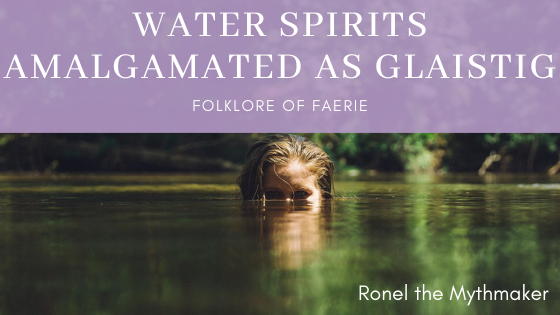

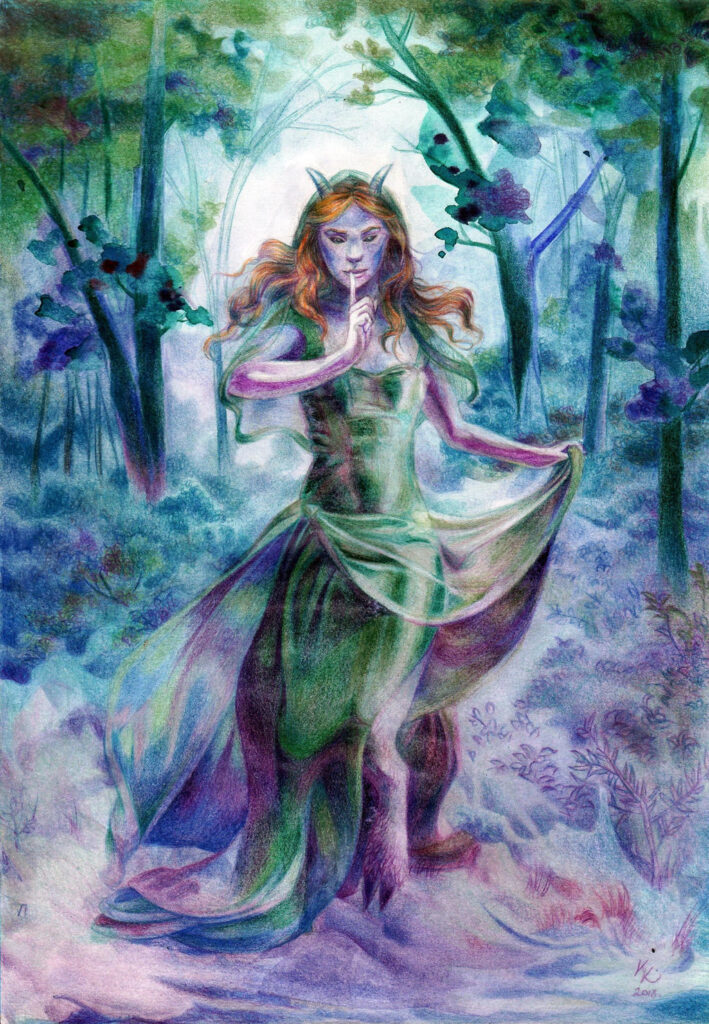

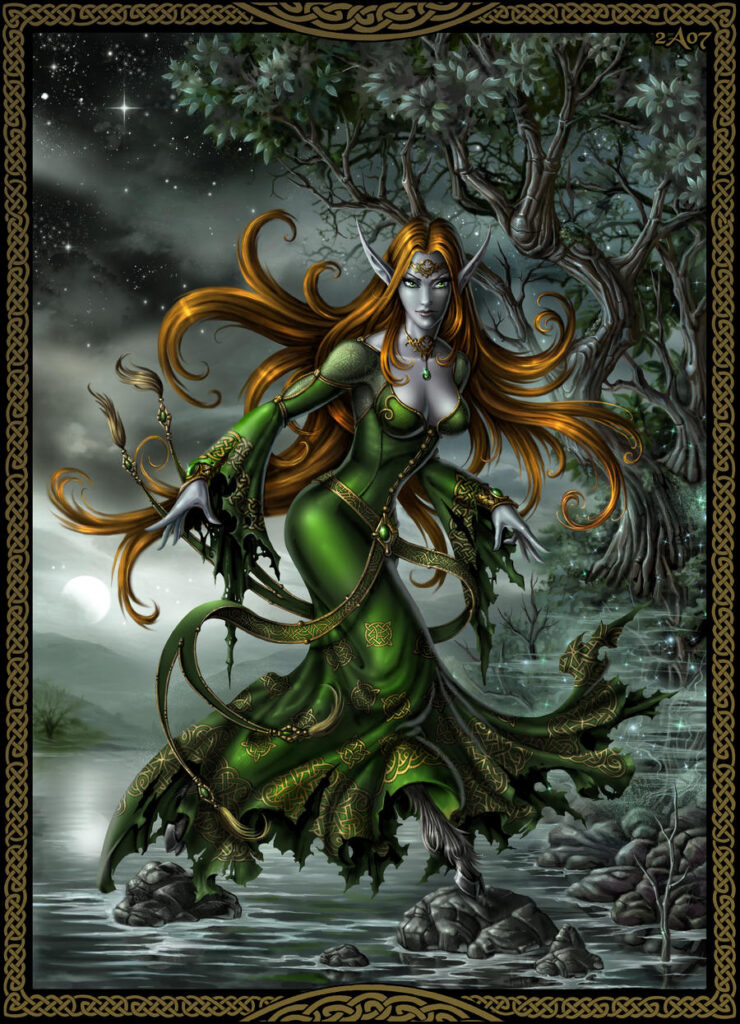


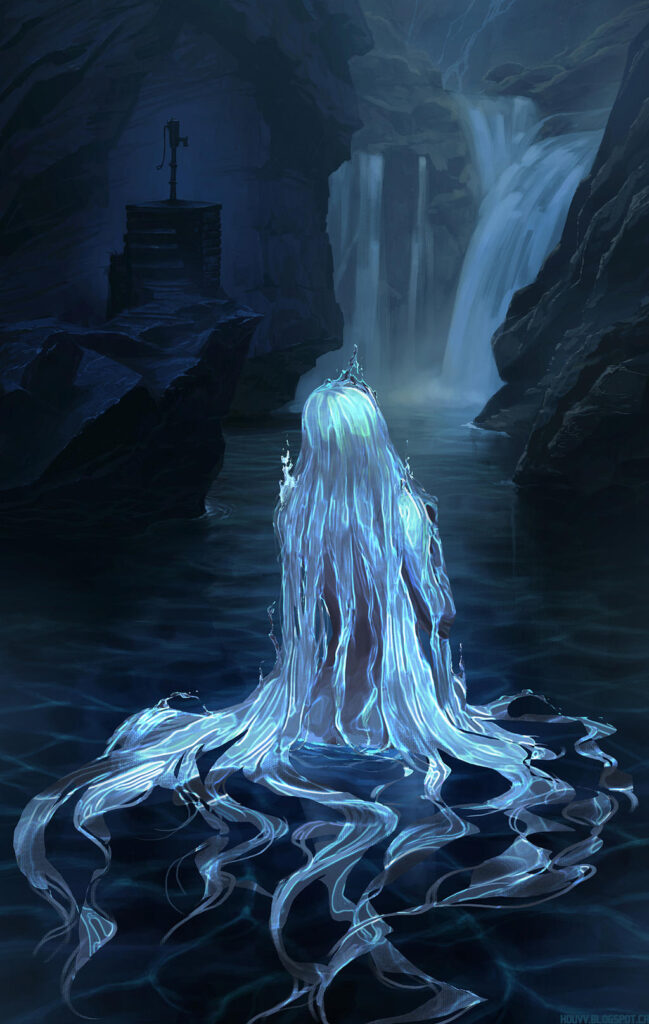





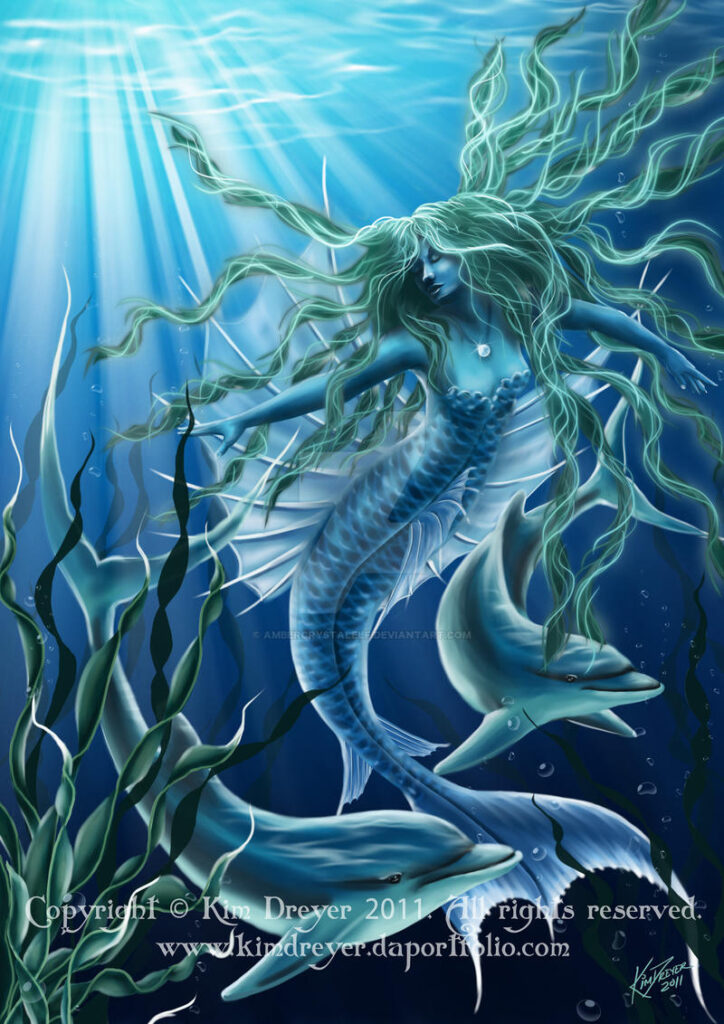
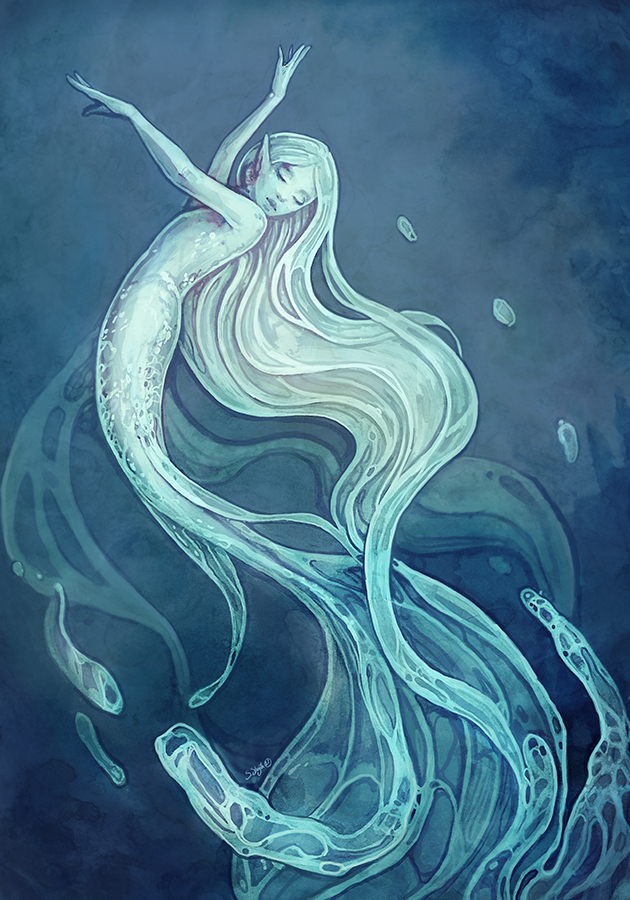

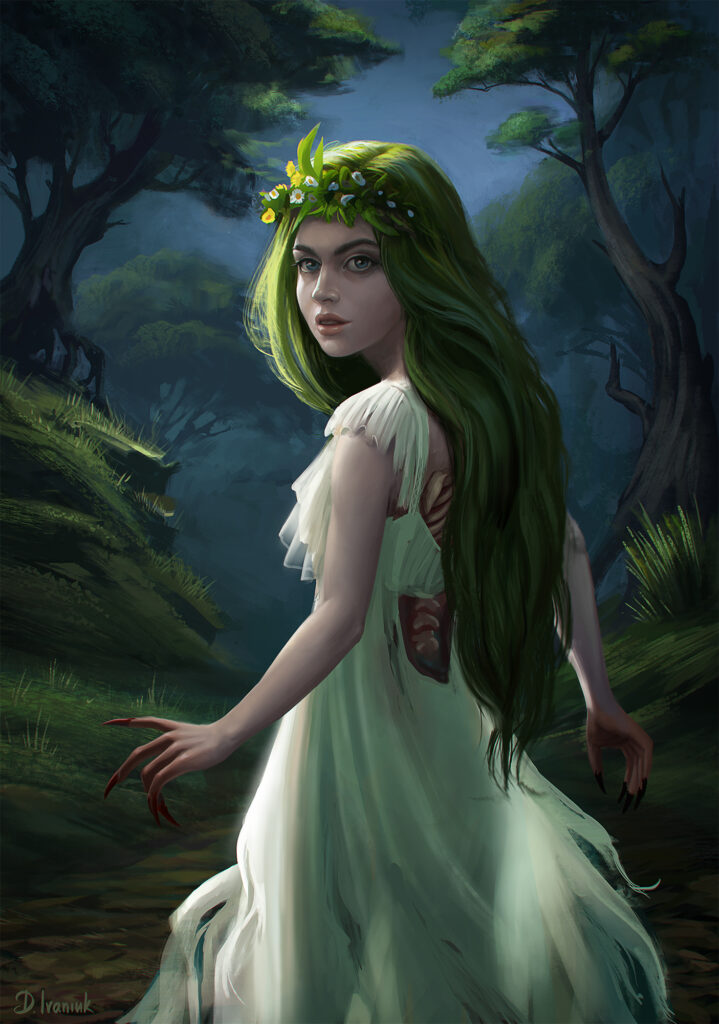



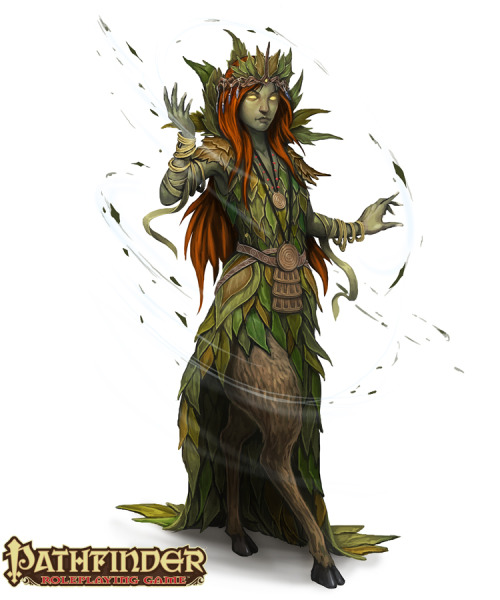
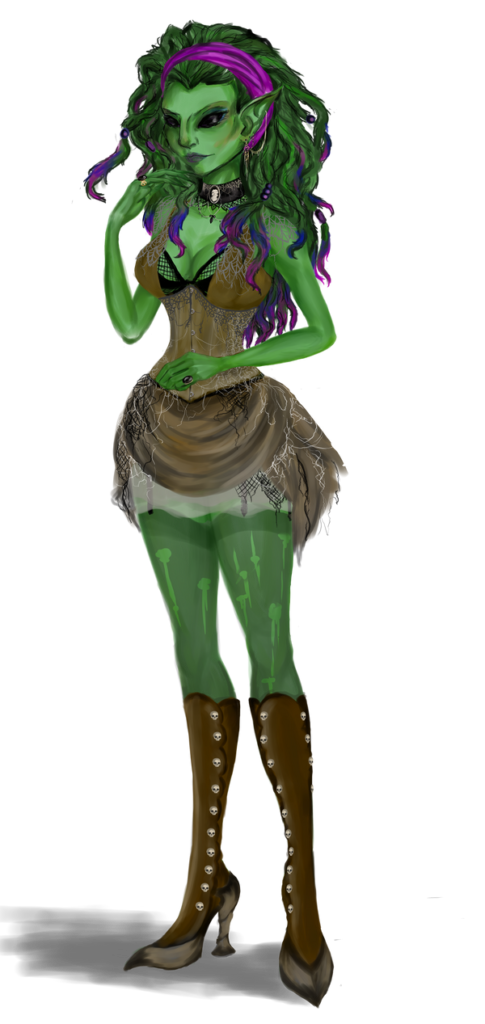

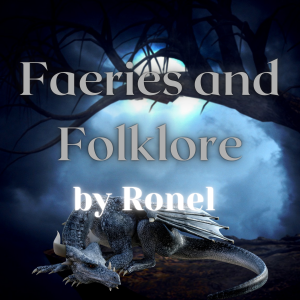

1 thought on “Water Spirits Amalgamated as Glaistig #folklore”